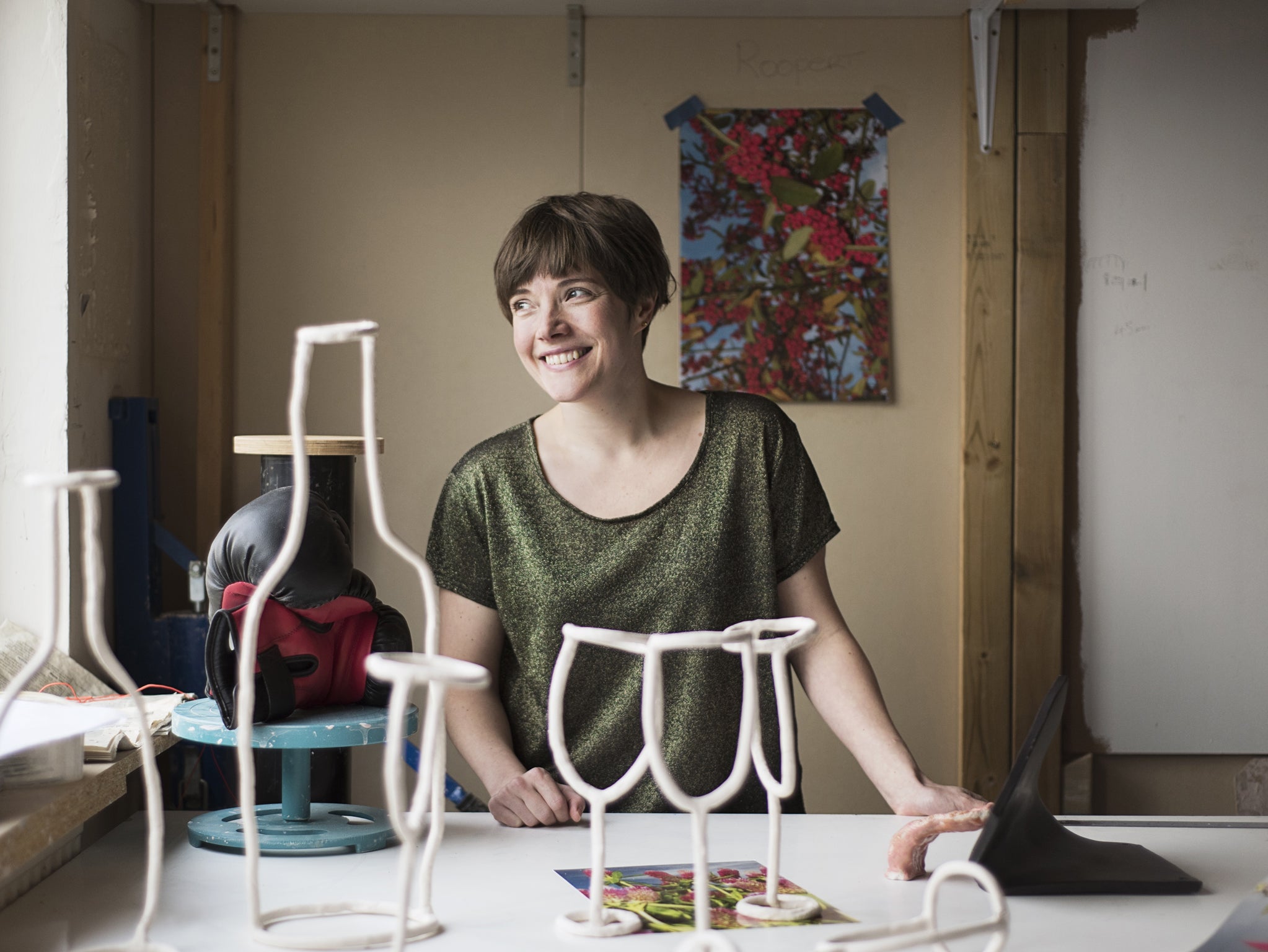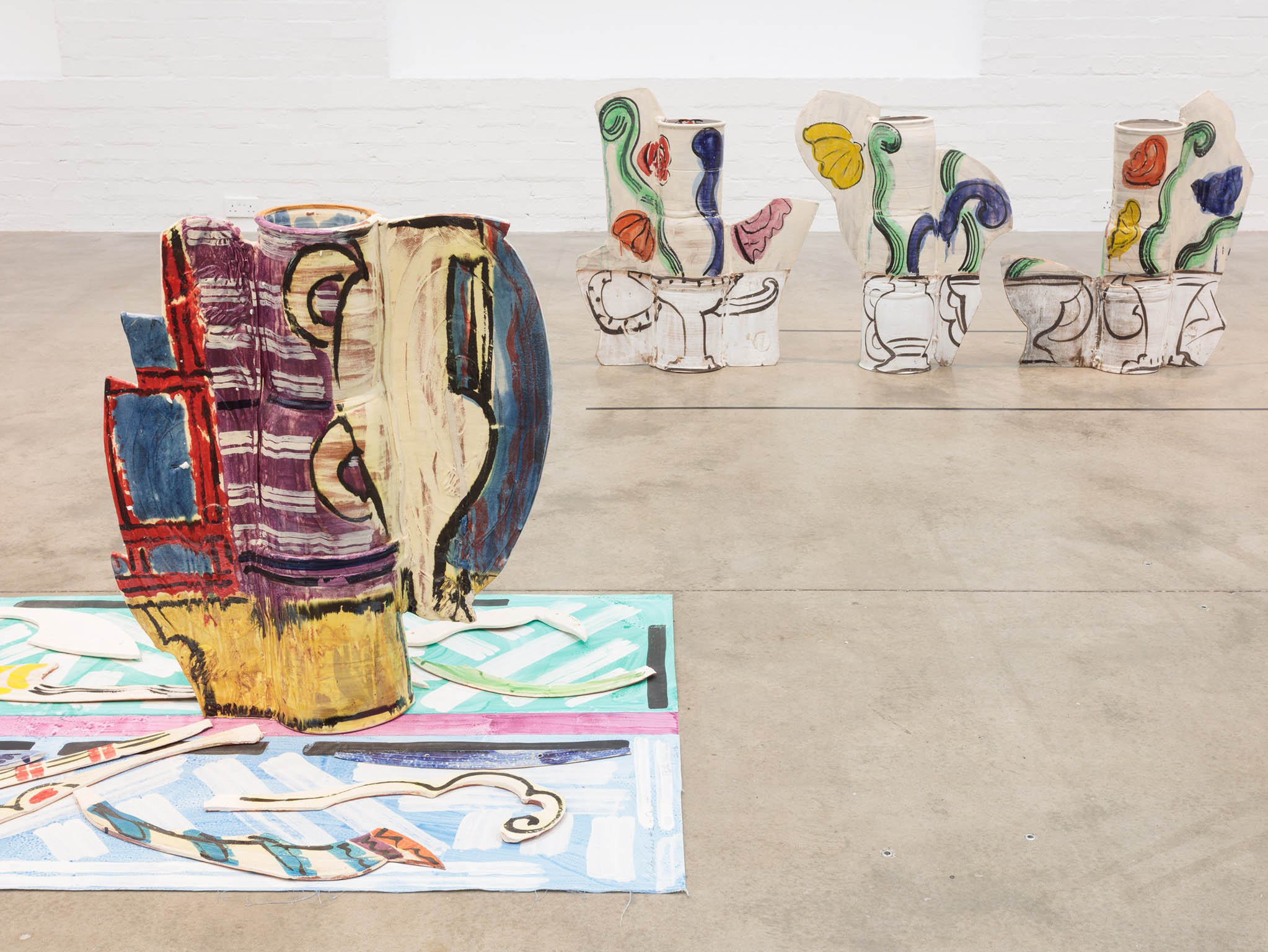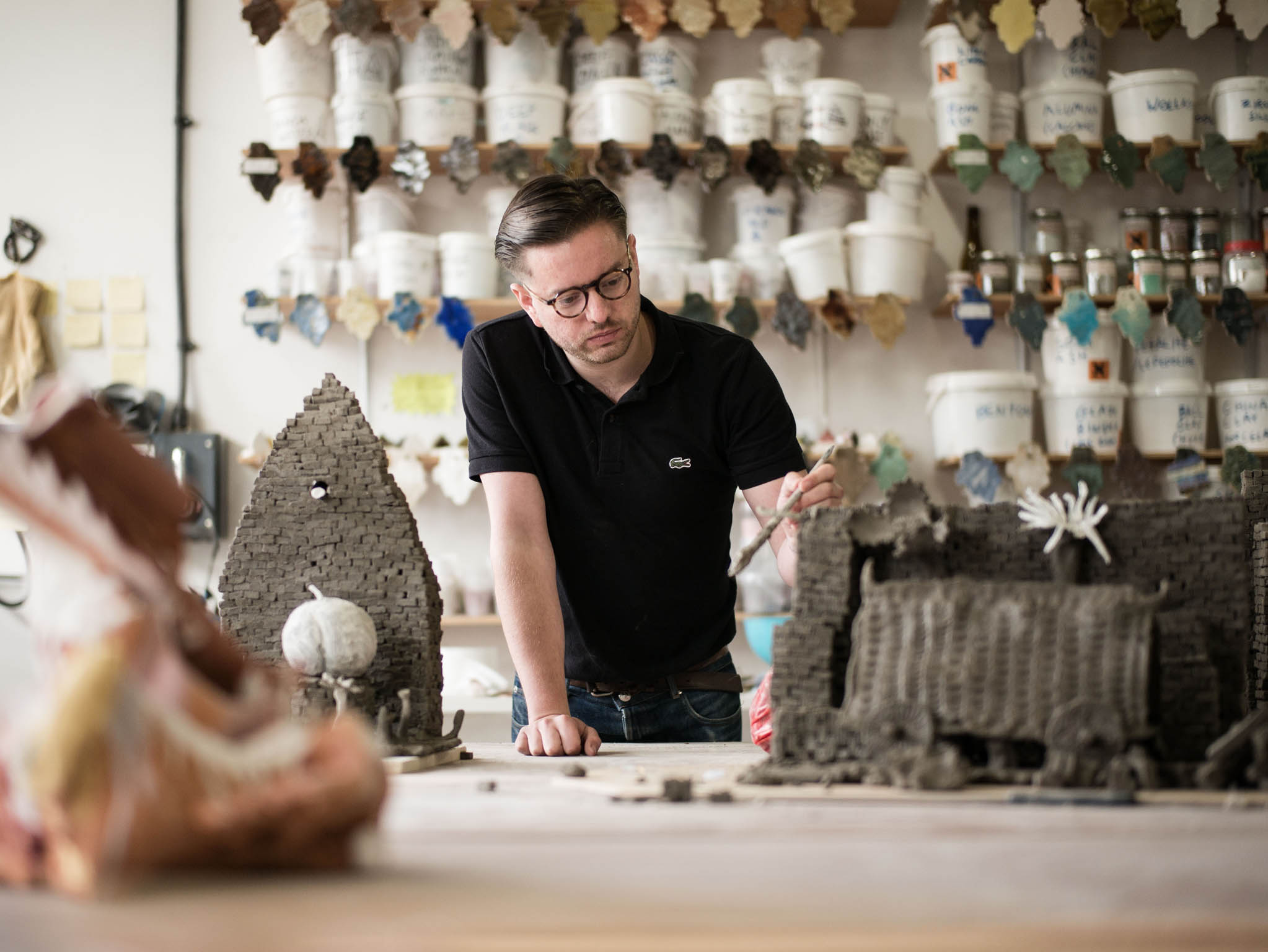The great ceramics revival: how clay is oozing back into contemporary art
This most ancient of art forms is back with a vengeance, says Hettie Judah

Your support helps us to tell the story
From reproductive rights to climate change to Big Tech, The Independent is on the ground when the story is developing. Whether it's investigating the financials of Elon Musk's pro-Trump PAC or producing our latest documentary, 'The A Word', which shines a light on the American women fighting for reproductive rights, we know how important it is to parse out the facts from the messaging.
At such a critical moment in US history, we need reporters on the ground. Your donation allows us to keep sending journalists to speak to both sides of the story.
The Independent is trusted by Americans across the entire political spectrum. And unlike many other quality news outlets, we choose not to lock Americans out of our reporting and analysis with paywalls. We believe quality journalism should be available to everyone, paid for by those who can afford it.
Your support makes all the difference.It is the particular ability of sculpture to evolve in step with the material world it inhabits, embracing evolving technologies and emerging media.
Inevitably, over the past decade or so, it’s an arena dominated by works exploring the digital world: a preoccupation reflected in the glitzy hi-tech buzz of current exhibitions Electronic Superhighway at Whitechapel in London and The Imitation Game at Manchester Art Gallery.
Against this attention grabbing, computer dominated backdrop, it’s hard not to view the resurgence of interest in one of the most ancient and elemental of art forms – ceramics – as a defiantly low-tech, hands-on rejoinder.
Part of a wider rediscovery of traditional craft techniques such as weaving, the ooze of clay back into sculptural practice has occurred slowly but, much like the grey streaks on your clothes after a studio visit, suddenly the stuff seems to be everywhere.
The new wave of talents deploying ceramics in their work include Emma Hart, winner of this year’s Max Mara Art Prize for Women, who has worked with both photography and clay in recent installations.
Hart’s minimal ceramic outlines of bottles and wine glasses teeter cartoonishly on photograph-topped trays held aloft by spindly ceramic arms, and glazed clay slabs stand in for the slick shine of officious clip boards.
The stuff also gives form to obscene, roughly textured tongues that lick out of filing cabinet drawers or loll from the lips of jugs. “Through layering photographs on to ceramics I can physically corrupt, bend and ‘dirty’ pictures,” explains Hart. “Unlike photography, clay allows me to put immediate feelings on its surface. I can stroke it, scratch it, punch it, kick it, bite it.”
The championing of clay as a sculptural medium by a younger generation of artists has brought with it a re-examination of work that weltered in the shadows over decades when ceramic was out of favour.
This spring, the ICA has dedicated its exhibition spaces to an uplifting exhibition of painting and ceramic sculpture by the Italophile New Yorker Betty Woodman.
Composed entirely of works created in the past 10 years, since the artist turned 75, it includes paintings of interiors that extend into the gallery space via ceramic elements, glazed and painted clay vessels arranged in pairs and trios, and vases painted with female figures dressed in textile kimonos.
The bright colours that flood the show evoke the considerable time that Woodman has spent in Tuscany since the 1960s when she first researched Etruscan ceramics.
While the show, talks and attendant events have been thronged with younger fans, the exhibition is also a reminder of how such media fall in and out of vogue.

Woodman started her career in the 1950s, as the California Clay Movement was gaining momentum on the opposite coast. Ten years ago, she was honoured with a retrospective at the Metropolitan Museum of Art. This is her first solo exhibition in the UK.
“It’s like magic, clay,” says Woodman. “Out of nothing you make something. It’s a friendly material. We have most of us had experiences with domestic objects made of clay – everybody can respond to it.” Woodman explicitly addresses the domestic arena and works with archetypal vase shapes, finding the universality of the form to be “a rich history for me to connect to”.
Her personal distinction between a pot and a piece of sculpture is clear and simple: “The artist has to be responsible for where it sits.” It was during visits to the V&A that she realised that she wasn’t happy with her work simply being put on a shelf with other vessels: “I realised I wanted my work to be looked at in a context not limited by ceramics, but in the broader context of art.”
The ceramics comeback is also reflected in the current iteration of the five-yearly British Art Show, which includes a stellar display of sculptures by artists including Caroline Achaintre, Aaron Angell, and Jesse Wine.
“Clay can be very raw and seductive at the same time, I love it,” says Achaintre, whose works take diverse forms, including dramatically tufted woven textiles.
At her recent exhibition at Arcade Fine Arts she presented sculptures combining ceramic and cloth elements that evoked ritual masks through the barest of suggestive folds or perforations.

As with many of the British-based artists bringing ceramic into their sculptural practice, Achaintre undertook a residency at Troy Town Art Pottery, a “radical and psychedelic” ceramic workshop in east London founded by Aaron Angell at the start of 2014.
Achaintre had previously worked with clay at evening classes and community centres, but Troy Town was “the first time I was surrounded by artists working with clay, some of them for the first time. It was fascinating to see how they translated their work into clay. They were never told what to do and therefore found entirely their own way.”
While Troy Town is open for community use, there is a prohibition on the production of functional objects. Angell demurs that running an open workshop is the only way for him to sustain a ceramic studio in London, but there is also a sense of redress at play.
For artists wanting to work in art school ceramics studios or use community pottery facilities “there’s so much resistance internally from those departments, to artists ‘misusing’ the equipment or not understanding the fundamentals,” says Angell, who, as a non-potter, found it hard to find studios in which he was allowed to experiment.
Nestled upstairs in a studio arts centre in Hackney, Troy Town has hosted 62 artist residencies over the past two years as well as community workshops, and it is to move into larger premises in April.
Pride of place is given to Angell’s wall of glazes, displayed on suspended tiles each cut with a shaped stamp apparently based on the profile of late singer-songwriter Kirsty MacColl. “We make all our own glazes from scratch – I go through phases of doing it really intensely. For a while I was completely obsessed,” he admits.
“Building, throwing: these are all quite generic, but glazing is always the knowledge that’s encoded into the pot, from the start of people running ceramics studios.”
Currently, the shelves of the studio are crammed with works by ex-resident artists waiting for their second firing. They’ve been commissioned for a major ceramics show at Tate St Ives, co-curated by Angell, who will also next year be the gallery’s artist in residence.
The exhibition will show the work of Troy Town Art Pottery alongside vernacular and ancient ceramic works, examples from the California Clay Movement and pieces by artists that have directly influenced Angell’s exploration of ceramics, including Richard Slee and Gillian Lowndes.
On the worktop Angell and his assistant are pain-stakingly building a citadel wall out of miniature clay bricks. It forms a backdrop for a large tableau constructed around a model treadwheel of the sort used to power cranes during a siege.
It’s one of a new series of works commissioned for next month’s Glasgow International Festival, some of which will be placed in the glass houses of the city’s Botanic Gardens.
With all the clay-centric buzz, it’s a bit of a surprise when he starts to talk knowledgably about a programme of 15th-century secular organ music that he’s putting together for Glasgow’s Kelvingrove Museum. It’s a timely reminder that for all the work he’s done in enabling ceramic art, Angell’s own practice stretches well beyond clay: “Material is just a means to an end.”
‘Betty Woodman: Theatre of the Domestic’ is at the ICA until 10 Apr; ‘That Continuous Thing: Artists and the Ceramics Studio, 1920 – Today’ will be at Tate St Ives from 31 Mar to 1 Oct 2017
Join our commenting forum
Join thought-provoking conversations, follow other Independent readers and see their replies
Comments